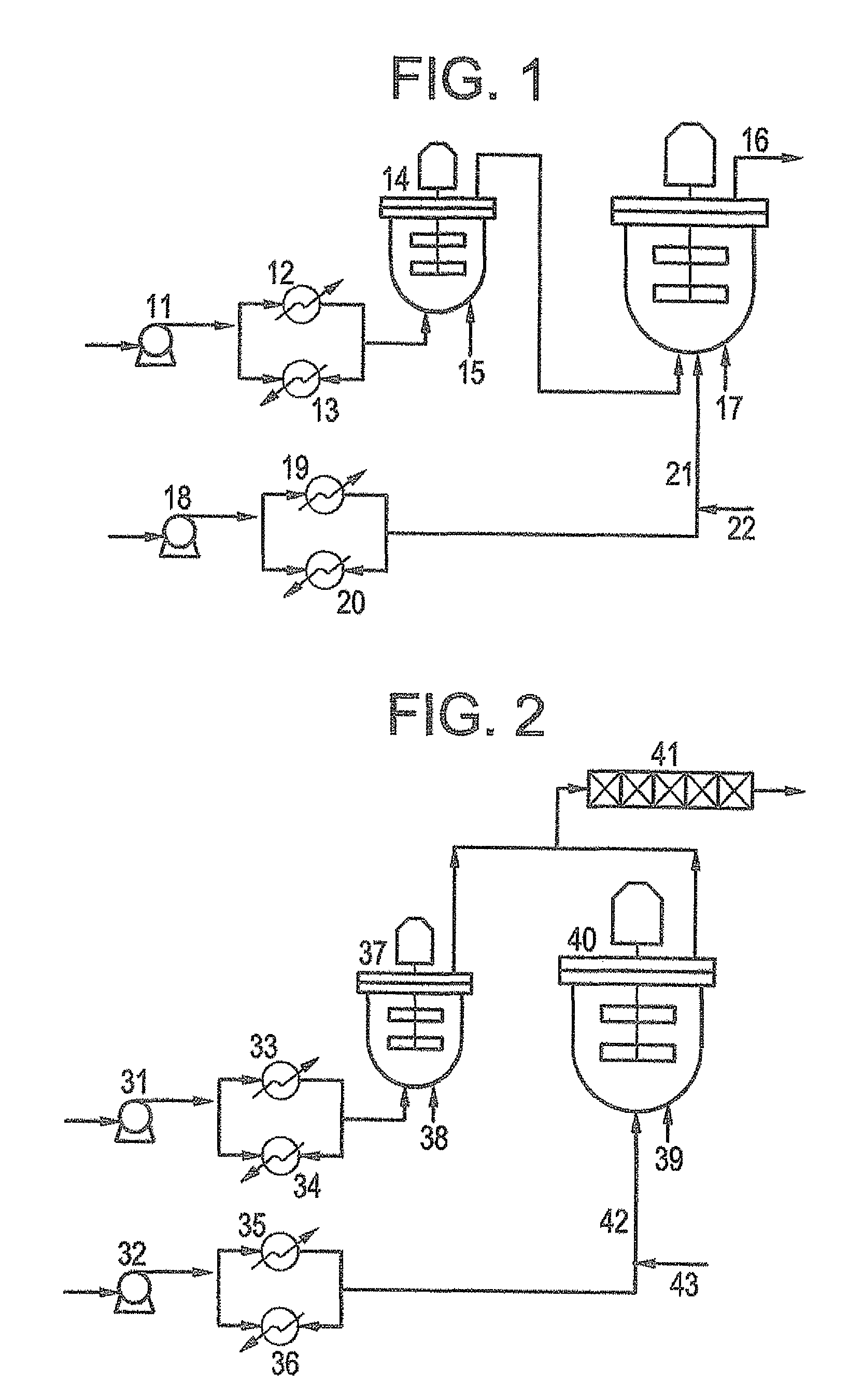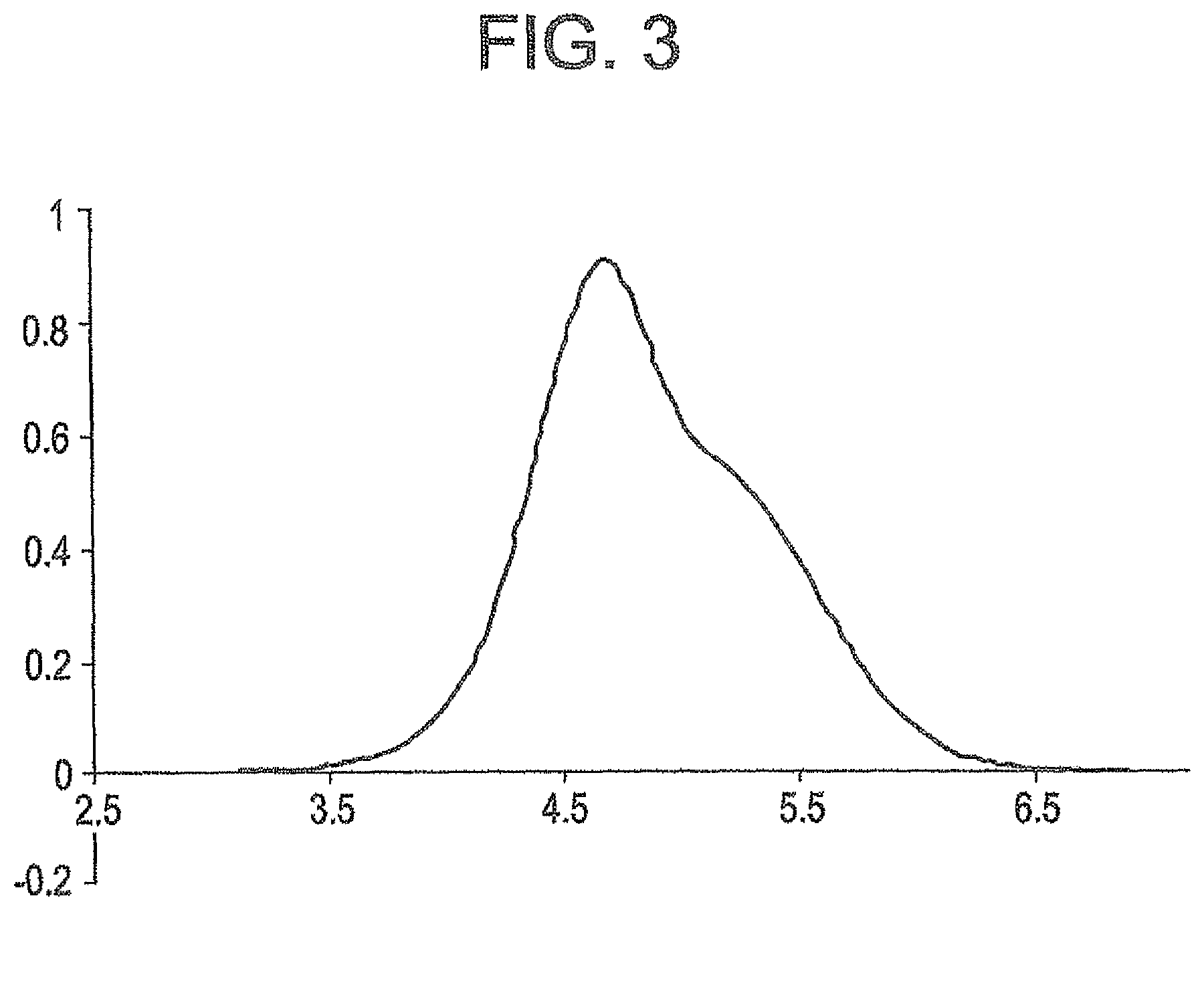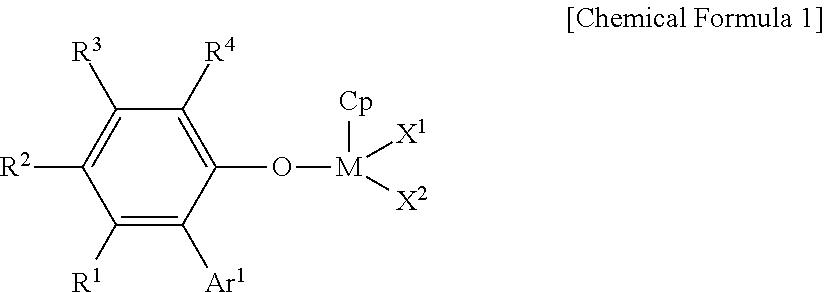Ethylene copolymer and a method of preparing the same
a technology of ethylene copolymer and process, which is applied in the direction of chemical/physical/physical-chemical processes, chemical apparatus and processes, chemical/physical/physical-chemical processes, etc., can solve the problems of increasing processing costs, difficult to prepare ethylene copolymer with various density distributions, and bimodal molecular weight distributions, etc., to achieve improved physical properties and high productivity
- Summary
- Abstract
- Description
- Claims
- Application Information
AI Technical Summary
Benefits of technology
Problems solved by technology
Method used
Image
Examples
preparation example 1
Synthesis of bis(2-phenyl-4-fluorophenoxy)(pentamethylcyclopentadienyl)titanium (IV) chloride
[0155]In diethyl ether (80 mL), dissolved was 2-phenyl-4-fluorophenol (1.90 g, 10.09 mmol), and butyl lithium (4.8 mL) (in 2.5 M hexane) was slowly added dropwise thereto at 0° C. After reacting for 5 hours at ambient temperature, solution of (trichloro)(pentamethylcyclopentadienyl)titanium (IV) (1.64 g, 5.5 mmol) in 10 mL of diethyl ether was slowly added dropwise thereto at −78° C. The mixture was stirred at ambient temperature for 12 hours, and filtered and evaporated to remove volatiles. Recrystallization from toluene / hexane mixture at −35° C. gave orange solid (2.54 g).
[0156]Yield: 85%
[0157]1H NMR (C6D6) δ=1.46 (s, 15H), 6.65˜7.57 (m, 8H).
preparation example 2
Synthesis of bis(4-methyl-2-(2′-isopropylphenyl)phenoxy)(pentamethylcyclopentadienyl)titanium (IV) chloride
[0158]In toluene (20 mL), dissolved were 4-methyl-2-(2′-isopropylphenyl)phenol (2 g, 8.8 mmol) and sodium hydride (636 mg, 26.5 mmol), and the mixture was reacted under reflux for 4 hours. Then the reaction mixture was cooled to ambient temperature, and solution of (pentamethylcyclopentadienyl)titanium (IV) trichloride (1.15 g, 4.0 mmol) dissolved in 5 mL of toluene was slowly added dropwise thereto. The resultant mixture was reacted under reflux for 24 hours. When the reaction was completed, volatile substances were removed and the residue was washed with purified hexane. Recrystallization from hexane at −35° C., and drying under reduced pressure gave orange solid (1.65 g).
[0159]Yield 61%
[0160]1H NMR (C6D6) δ=0.96-1.07 (m, 6H), 1.54 (s, 15H), 1.72 (s, 3H), 2.76 (m, 1H), 6.76-7.27 (m, 7H) ppm
preparation example 3
Synthesis of bis(2-phenylphenoxy)(pentamethylcyclopentadienyl)titanium (IV) chloride
[0161]In a dry flask, 2-phenylphenol (1.72 g, 10.1 mmol, Aldrich 99%) was dissolved in 40 mL of toluene. The solution was cooled to 0° C. with thorough stirring, and n-butyllithium (4.8 mL, 2.5 M in hexane, Aldrich) was slowly added thereto. After maintaining the temperature for 1 hour, solution of pentamethylcylcopentadienyl titanium trichloride (1.64 g, 55 mmol) dissolved in 10 mL of toluene was slowly added thereto. After maintaining the temperature for 1 hour, the temperature was raised to ambient temperature, and the reaction mixture was stirred for additional 1 hour. The temperature of the reactor was raised to 90° C., and reaction was carried out for 12 hours. The mixture was filtered, evaporated to remove volatiles, and recrystallized from toluene / hexane mixed solvent at −35° C. to obtain orange solid (2.3 g).
[0162]Yield: 75%
[0163]1H NMR (C6D6) δ=1.54 (s, 15H), 6.74˜7.16 (m, 9H) ppm
PUM
| Property | Measurement | Unit |
|---|---|---|
| pressure | aaaaa | aaaaa |
| temperature | aaaaa | aaaaa |
| temperature | aaaaa | aaaaa |
Abstract
Description
Claims
Application Information
 Login to View More
Login to View More - R&D
- Intellectual Property
- Life Sciences
- Materials
- Tech Scout
- Unparalleled Data Quality
- Higher Quality Content
- 60% Fewer Hallucinations
Browse by: Latest US Patents, China's latest patents, Technical Efficacy Thesaurus, Application Domain, Technology Topic, Popular Technical Reports.
© 2025 PatSnap. All rights reserved.Legal|Privacy policy|Modern Slavery Act Transparency Statement|Sitemap|About US| Contact US: help@patsnap.com



